Meet the Hallucinogenic Fish That Can Give You LSD-Esque Nightmares
It gives new meaning to a “fishing trip.”
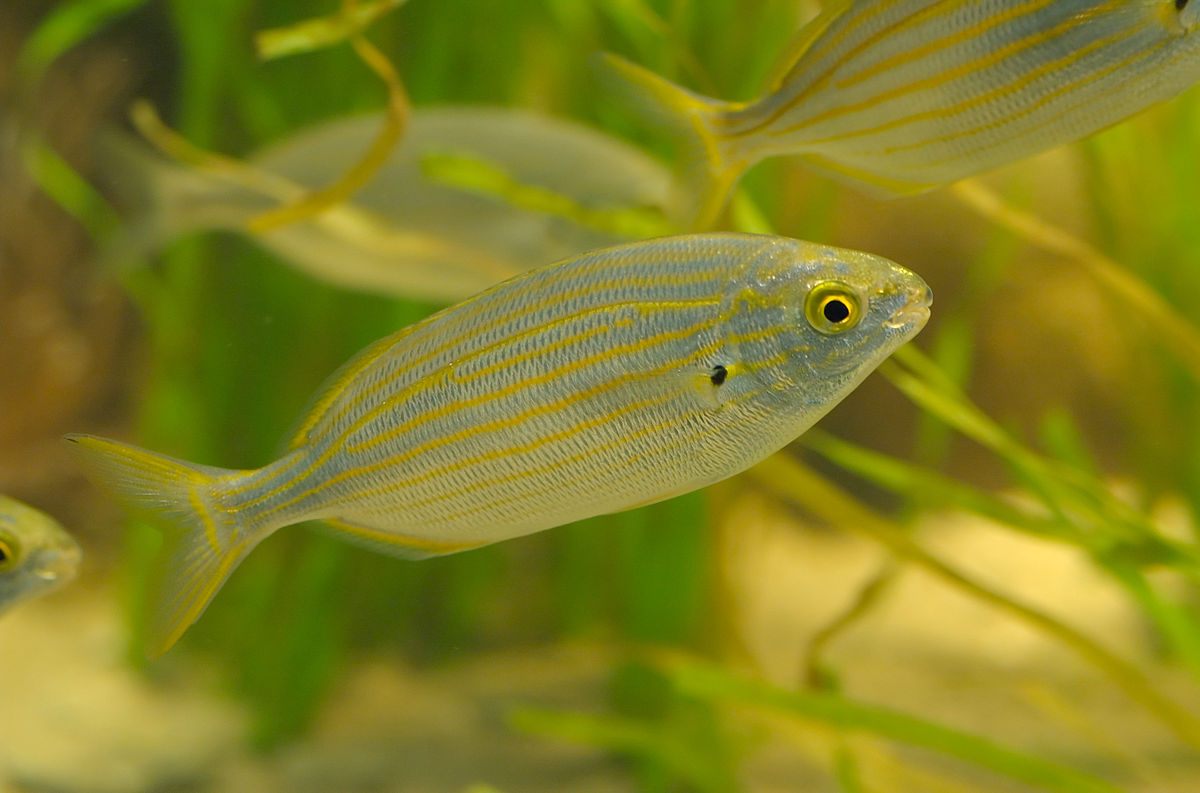 Sarpa salpa, the “dreamfish.” (Photo: Tino Strauss/CC BY-SA 3.0)
Sarpa salpa, the “dreamfish.” (Photo: Tino Strauss/CC BY-SA 3.0)On rare occasions, people have gotten high using not pills, but gills—by eating the fish Sarpa salpa.
Recognizable by gold stripes running along its side, the fish, known by its common name salema porgy, is an otherwise unremarkable inhabitant of temperate and tropical areas, from the Atlantic coast of Africa and up throughout the Mediterranean Sea. But don’t let its seemingly harmless exterior fool you—salema porgy can function as a hallucinogen, and a rather terrifying one at that.
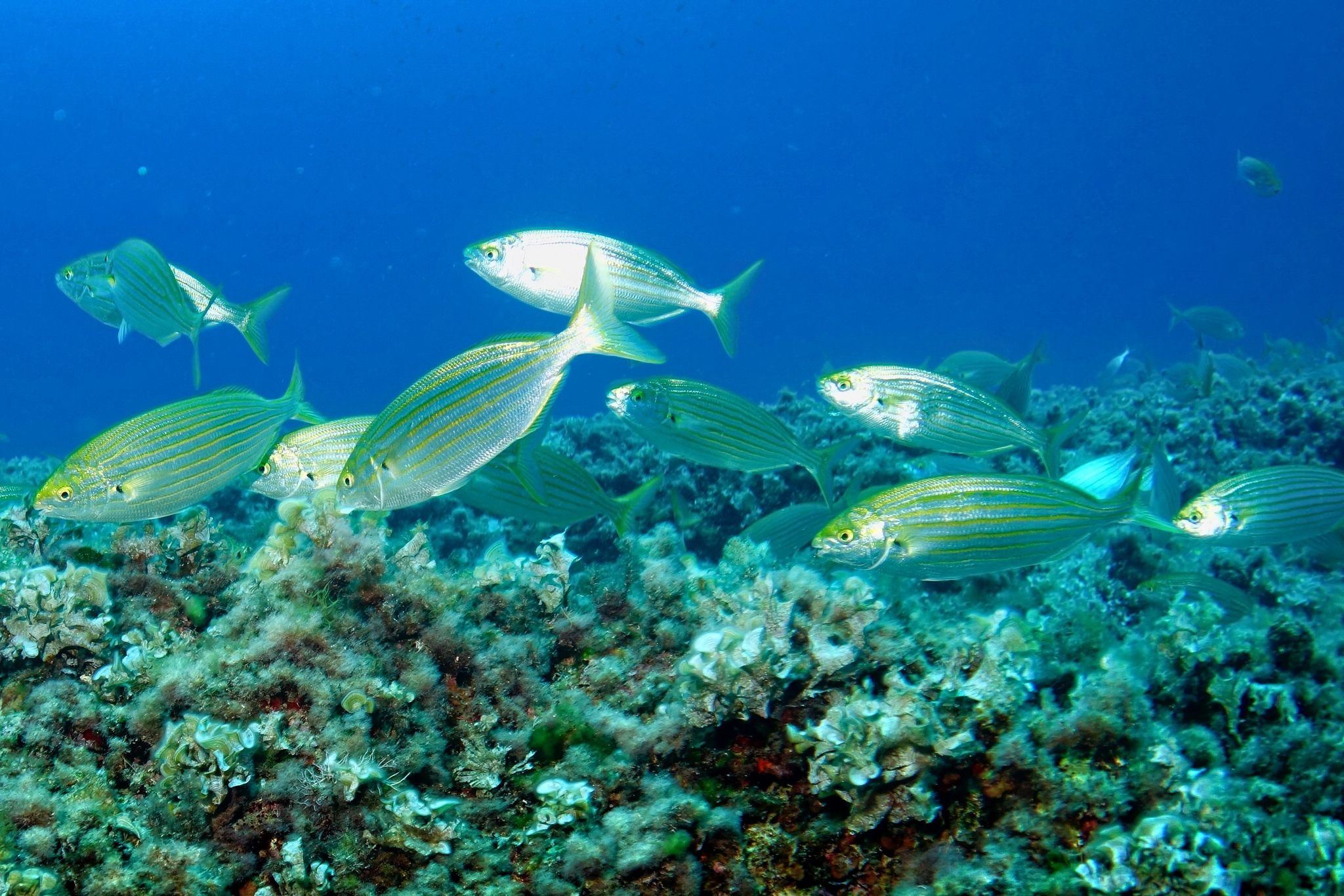 A school of Sarpa salpa. (Photo: Lars Behnke/CC BY SA-2.0)
A school of Sarpa salpa. (Photo: Lars Behnke/CC BY SA-2.0)Because of its properties—it’s known in Arabic as “the fish that makes dreams”—this sea bream was supposedly consumed as a recreational drug in the Roman Empire and used among Polynesians for ceremonial purposes. Today reports of actual trips from eating the fish are few and far between, but two recent case studies published in 2006 in an article in the journal Clinical Toxicology paint a picture of just how psychedelic this ocean dweller truly is.
According to the article, in 1994, a 40-year-old man felt nauseated about two hours after enjoying fresh baked Sarpa salpa on his vacation on the French Riviera. With symptoms like blurred vision, muscle weakness and vomiting persisting and worsening throughout the next day, he cut his vacation short and hopped in the car, only to realize mid-journey that he couldn’t drive with all the screaming animals distracting him. These giant arthropods—mere hallucinations, of course—were the last straw. The man directed himself to a hospital, where he recovered completely after 36 hours. He couldn’t recall a thing.
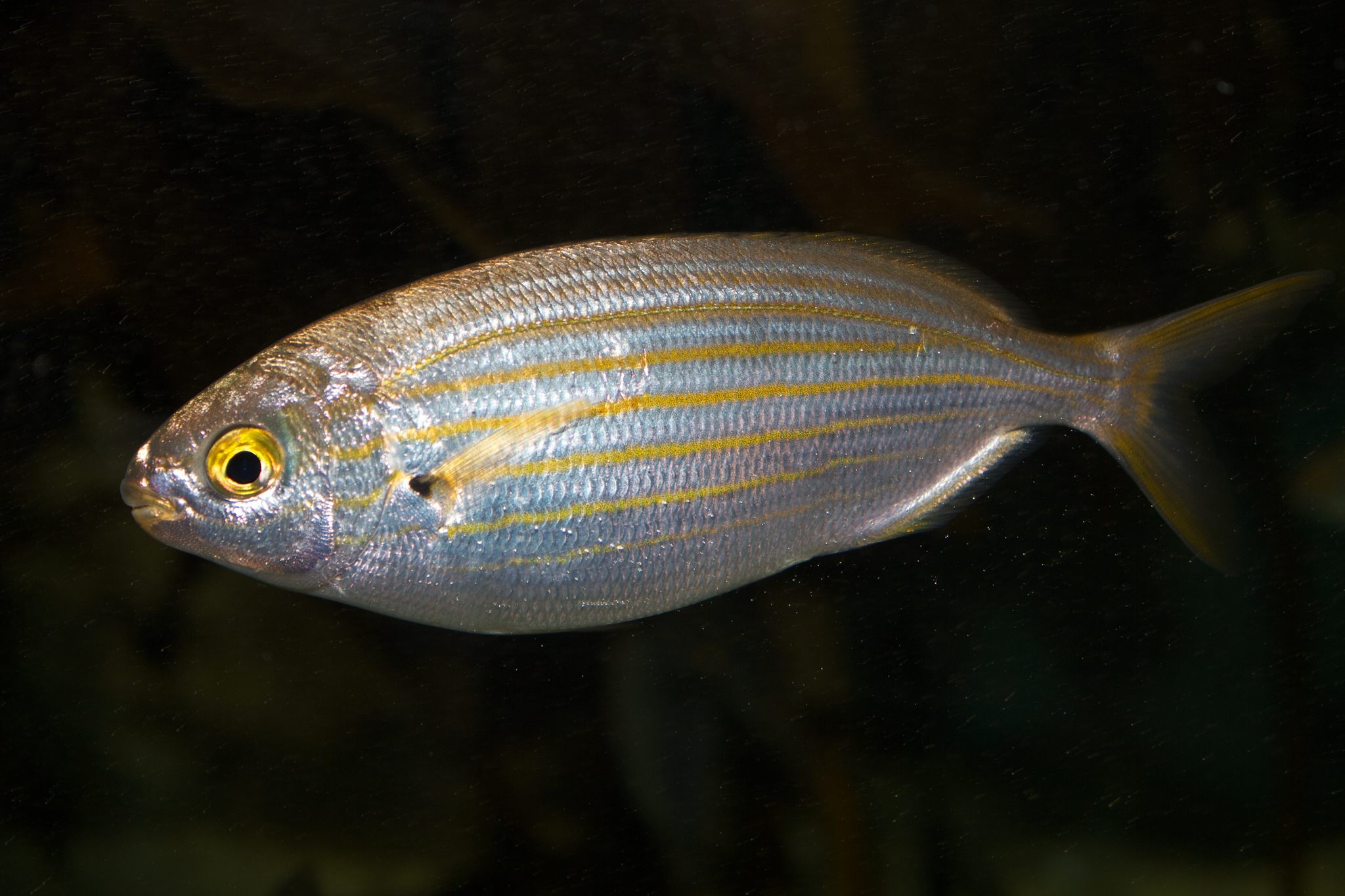 Sarpa salpa with the characteristic gold stripes. (Photo: Brian Gratwicke/CC BY SA-2.0)
Sarpa salpa with the characteristic gold stripes. (Photo: Brian Gratwicke/CC BY SA-2.0)
That wasn’t the only case. The next reported incident came in 2002, when after purchasing, cleaning and eating the fish in Saint Tropez, also on the French Riviera, a 90-year-old man started to experience hallucinations of screaming humans and squawking birds. For two nights he had horrifying nightmares, but he didn’t let anyone know, thinking he was developing a mental illness. Fortunately for him, the effects of the fish subsided after a couple days.
These often demonic hallucinations, both auditory and visual, characterize the phenomenon known as ichthyoallyeinotoxism, a rare poisoning following the ingestion of certain fish. Catherine Jadot, a marine biologist at the Reef Ball Foundation whose doctoral research focused on the fish, says such poisoning can trigger nervous system disturbances and cause effects similar to those of LSD.
Why do some people eat sea bream with no apparent side effects while others are transported to a world of utter chaos of nightmarish proportions? If everyone could take the trip of a lifetime, why wouldn’t there be more stories of Mediterranean meals gone wrong, of a black market of sea bream?
Figuring out what exactly makes this fish so trippy isn’t so easy. A study published in In Vitro Cellular and Developmental Biology in 2012, however, linked the fish’s consumption of phytoplankton that grow on the seagrass Posidonia oceanica, one of the main components of its diet, with higher levels of toxicity in the fish’s organs. This elevated toxicity could be a reason why certain Sarpa salpa take a toll on humans’ physical and mental wellbeing.
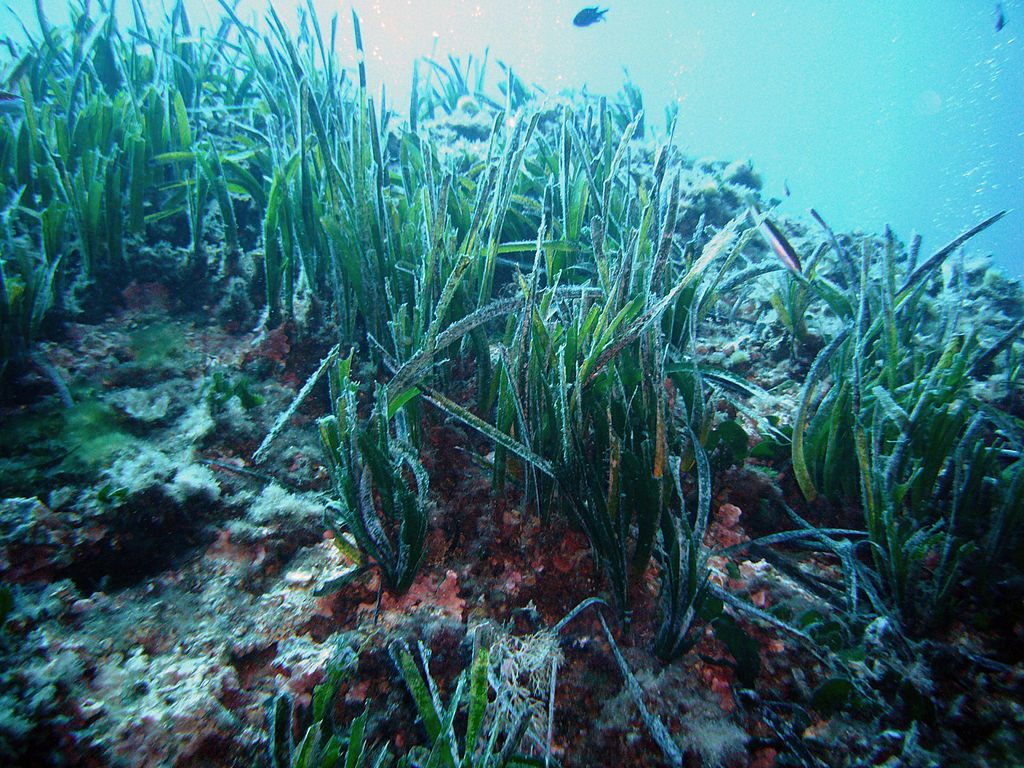 Posidonia oceanica, the seagrass home of phytoplankton eaten by Sarpa salpa. (Photo: Yoruno/CC BY-SA 3.0)
Posidonia oceanica, the seagrass home of phytoplankton eaten by Sarpa salpa. (Photo: Yoruno/CC BY-SA 3.0)It’s not clear, though, which toxins are responsible for such a vivid response in the eater. They could be alkaloids of the indole group, compounds occurring naturally in certain algae and phytoplankton the fish eat and which are chemically similar in structure to LSD. Or a hallucinogen called dimethlytrypthamine (DMT), the same compound found in the spiritual healing brew ayahuasca, might be responsible.
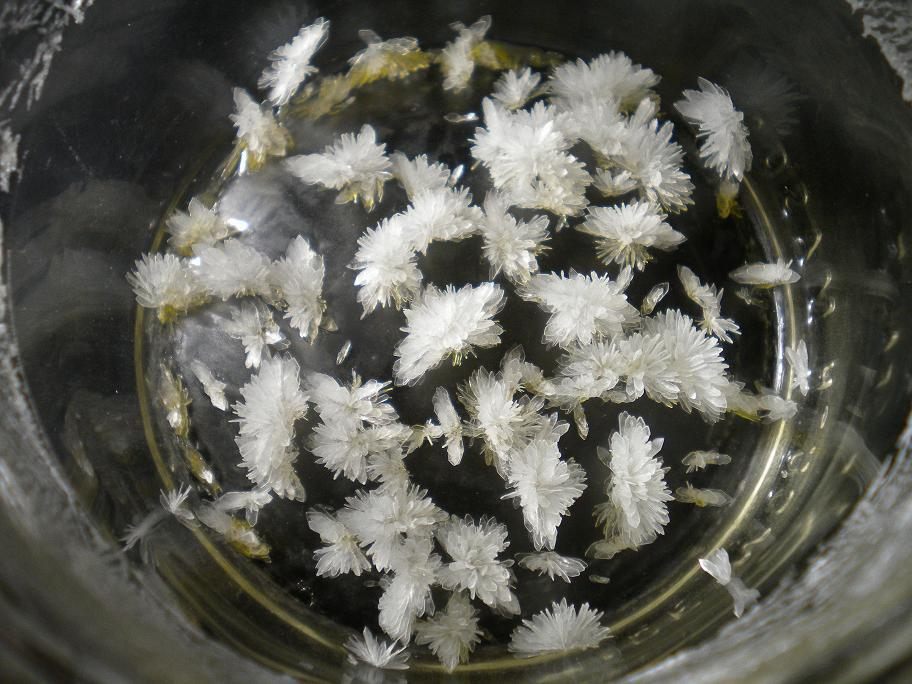 Crystals of DMT, the compound that might be responsible for the hallucinogenic effects. (Photo: Public Domain)
Crystals of DMT, the compound that might be responsible for the hallucinogenic effects. (Photo: Public Domain)
Jadot says there’s not enough research yet about the agents that might cause ichthyoallyeinotoxism or the specific effects the fish has on those who consume it.
For one, it’s hard to pinpoint exactly when this fish can and can’t poison you. Apparently, certain body parts, including the fish’s head, contain these trippy toxins, whereas others are hallucinogen-free. And the season during which the fish is caught plays a role, too; the same 2012 study cited autumn as the time of year when toxicity was highest in the fish. But the most reports of poisoning, the 2006 report says, are from late spring and summer.
The odds are that you won’t find yourself accidentally tripping on Sarpa salpa. But in the unlikely event you order sea bream on the French Riviera and experience 36 hours of soul-wrenching terror, at least you’ll know the cause.









Follow us on Twitter to get the latest on the world's hidden wonders.
Like us on Facebook to get the latest on the world's hidden wonders.
Follow us on Twitter Like us on Facebook